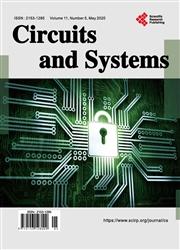Drafting an Electrostatic Charge Control Plan for a Large Scale Scientific Instrument: Guidelines and a Case Study
引用次数: 0
Abstract
Large-scale scientific instruments strongly support top-level research all around the world. Besides their intrinsic merits, they often play a valuable role as pathfinders for developing and testing instrumentation and as training grounds for young researchers. Strategies and roadmaps for these facilities have become a priority for a number of private and public funding organizations. Despite the large amount of mature work done in the industrial arena, it is difficult to find documents providing clear and concise orientation on how to prevent or minimize the damage caused by electrostatic discharges (ESD) in research infrastructure. This paper aims to gather all this information to develop a static charge control plan for a large-scale scientific facility. The specific case of the static charge control plan for the installation of CTA-LST telescopes is added as an example and verification of the actual applicability of the measures proposed in this document, providing static charge in human body monitoring measurements. Specific tests performed on equipment with ESD sensitive components are also described, which helped to assess any possible damage.大型科学仪器静电电荷控制方案的制定:指导原则和案例研究
大型科学仪器有力地支持了世界各地的顶级研究。除了其固有的优点外,它们还经常作为开发和测试仪器的开拓者以及年轻研究人员的培训基地发挥着宝贵的作用。这些设施的战略和路线图已成为一些私人和公共资助组织的优先事项。尽管在工业领域已经做了大量成熟的工作,但很难找到关于如何在研究基础设施中防止或最大限度地减少静电放电(ESD)造成的损害的清晰简洁的文件。本文旨在收集所有这些信息,为大型科学设施制定静电控制计划。增加了安装CTA-LST望远镜的静电荷控制计划的具体案例,作为本文件中提出的措施的实际适用性的示例和验证,为人体监测测量提供了静电荷。还描述了对带有ESD敏感部件的设备进行的具体测试,这有助于评估任何可能的损坏。
本文章由计算机程序翻译,如有差异,请以英文原文为准。
求助全文
约1分钟内获得全文
求助全文

 求助内容:
求助内容: 应助结果提醒方式:
应助结果提醒方式:


